Majestic sand dunes along a pristine shoreline can make for a picturesque landscape. They also serve a crucial role in the natural environment.
A six-month project to repair protective sand dunes along the shoreline of Kennedy Space Center recently was completed. The effort was celebrated with a ceremony at the site of the restoration effort.
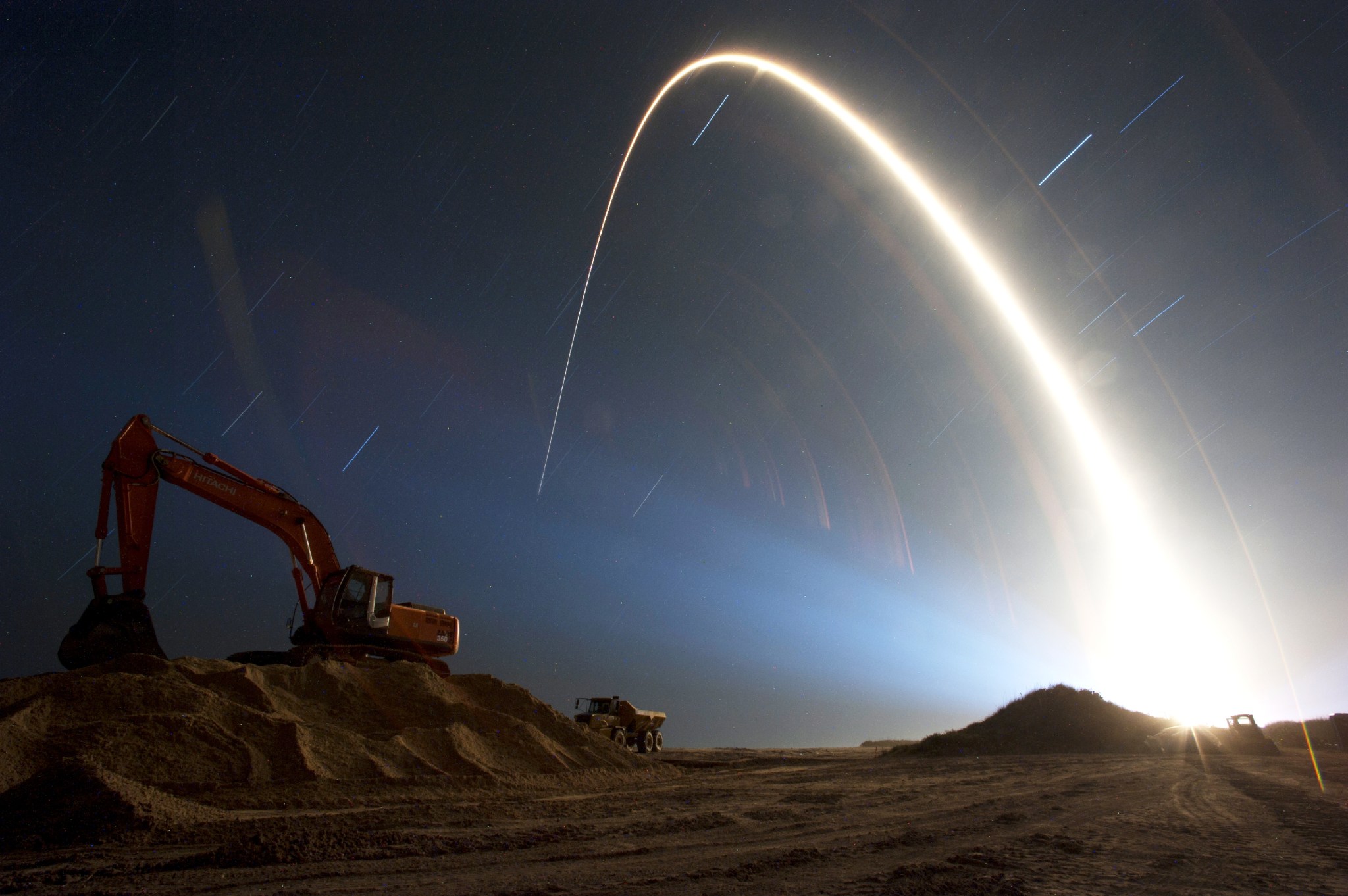
Frequent pounding from storms, especially Hurricane Sandy in October 2012, along with other weather systems, such as higher than usual tides, destroyed the sand dunes protecting important infrastructure at the spaceport.
With the additional effects of climate change showing up from Miami to Alaska, two University of Florida (UF) geologists are focusing their attention on the shores of the center.
Nancy Bray, center operations director for Kennedy, said NASA is taking the situation seriously and has plans for dealing with it. A similar plan has been prepared for NASA’s Wallops Island Flight Facility in Virginia, though Wallops has not yet seen the effects that have shown up at Kennedy.
“We do consider sea-level rise and climate change to be urgent,” she said. “Without that secondary dune line, we could have saltwater intrusion at the launch pad.”
According to Don Dankert, a biological scientist in the NASA Environmental Management Branch of Center Operations, the work completed a reconstruction effort that began in October 2013.
“We built a 1.2 mile dune,” he said. “It’s all donated sand from our (U.S. Air Force) friends over on Cape Canaveral Air Force Station. They provided us with 90,000 cubic yards of beach quality sand.”
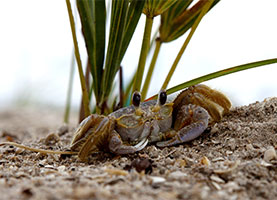
Glenn Semmel, chief of the Environmental Management Branch of Center Operations, pointed out that vegetation was planted along the new dune to prevent erosion.
“All totaled, 180,000 plants were placed along the restored stretch of beach,” he said. “As they take root and grow, the vines and shrubs should hold the sand in place.”
The May 2 ceremony included Burton Summerfield, a senior advisor for Institutional Management in the office of the Kennedy associate director, and Becky Bolt, a wildlife ecologist with InoMedic Health Applications Inc. (IHA), joining Dankert in planting the final palmetto palm at the base of the mound.
Assistant professor Peter Adams of the UF Geological Sciences department and associate professor of geology John Jaeger, along with Kennedy officials, began developing a strategy for restoration of the space center shoreline in 2009.
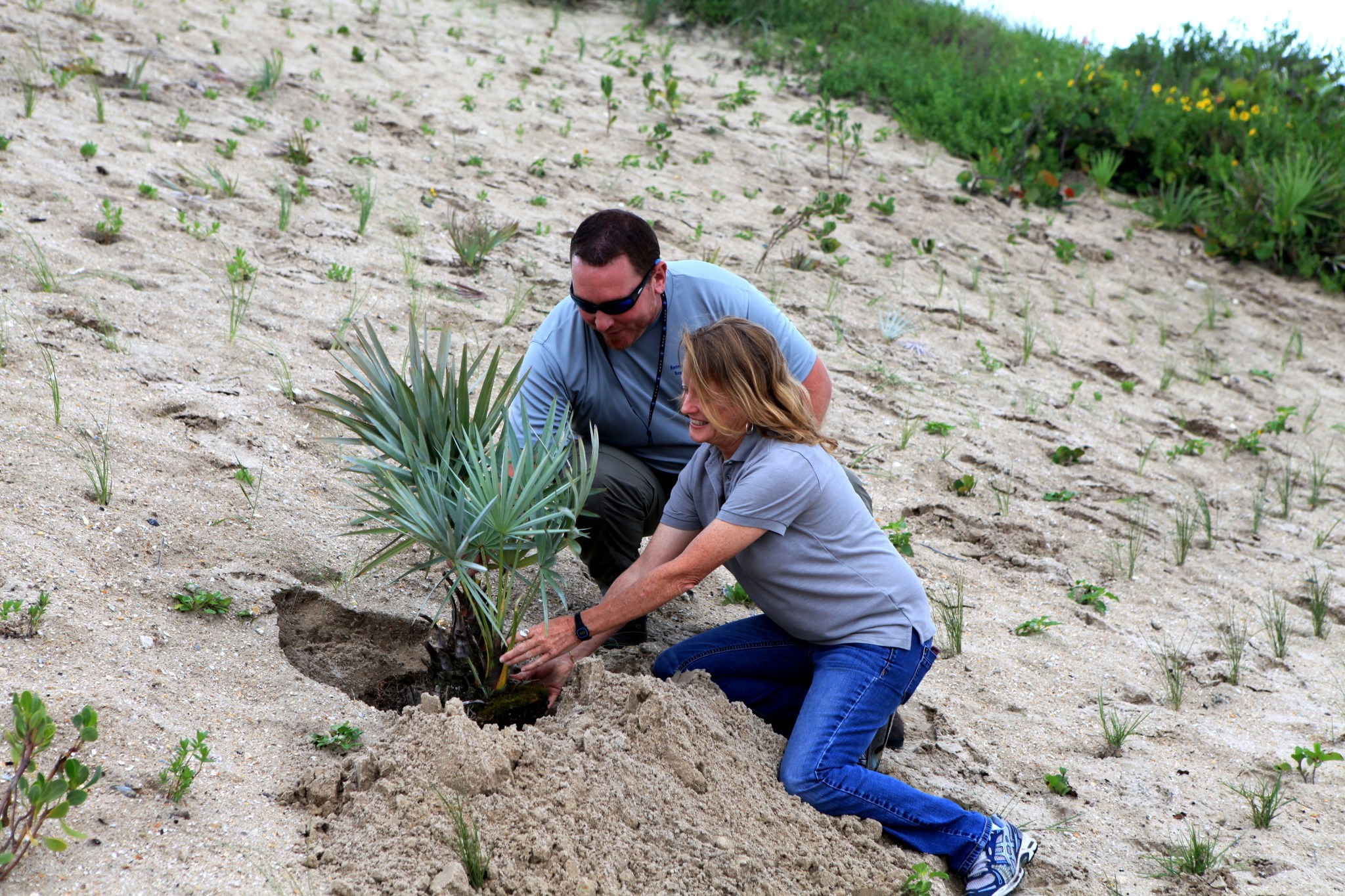
“It started about five years ago with the formation of the Dune Vulnerability Team to assess the condition of our shoreline and develop a strategy to provide long-term protection,” Dankert said. “Our partners with IHA, the University of Florida, the U.S. Army Corps of Engineers and the U.S. Geological Survey, helped us develop a plan for preserving our diminishing shoreline.”
He added that this is just one small part of an overall project to reconstruct the dunes along the Kennedy shoreline.
Over the years, tropical weather has continually battered the shoreline. Some systems pass by, but there have been a few direct hits. Even though it did not make landfall, one of the most destructive storms ever to hit the United States was Hurricane Sandy, which pounded the beaches of Brevard County in Florida, including those at Kennedy. The storm continued up the coastline damaging the Southeastern and Mid-Atlantic states before delivering a devastating blow to the Northeast.
“It’s a constant battle to restore the dunes that hold off the weather-induced erosion,” Dankert said. “The new dune is going to provide protection for our launch infrastructure along our most critically eroded stretch of shoreline.”
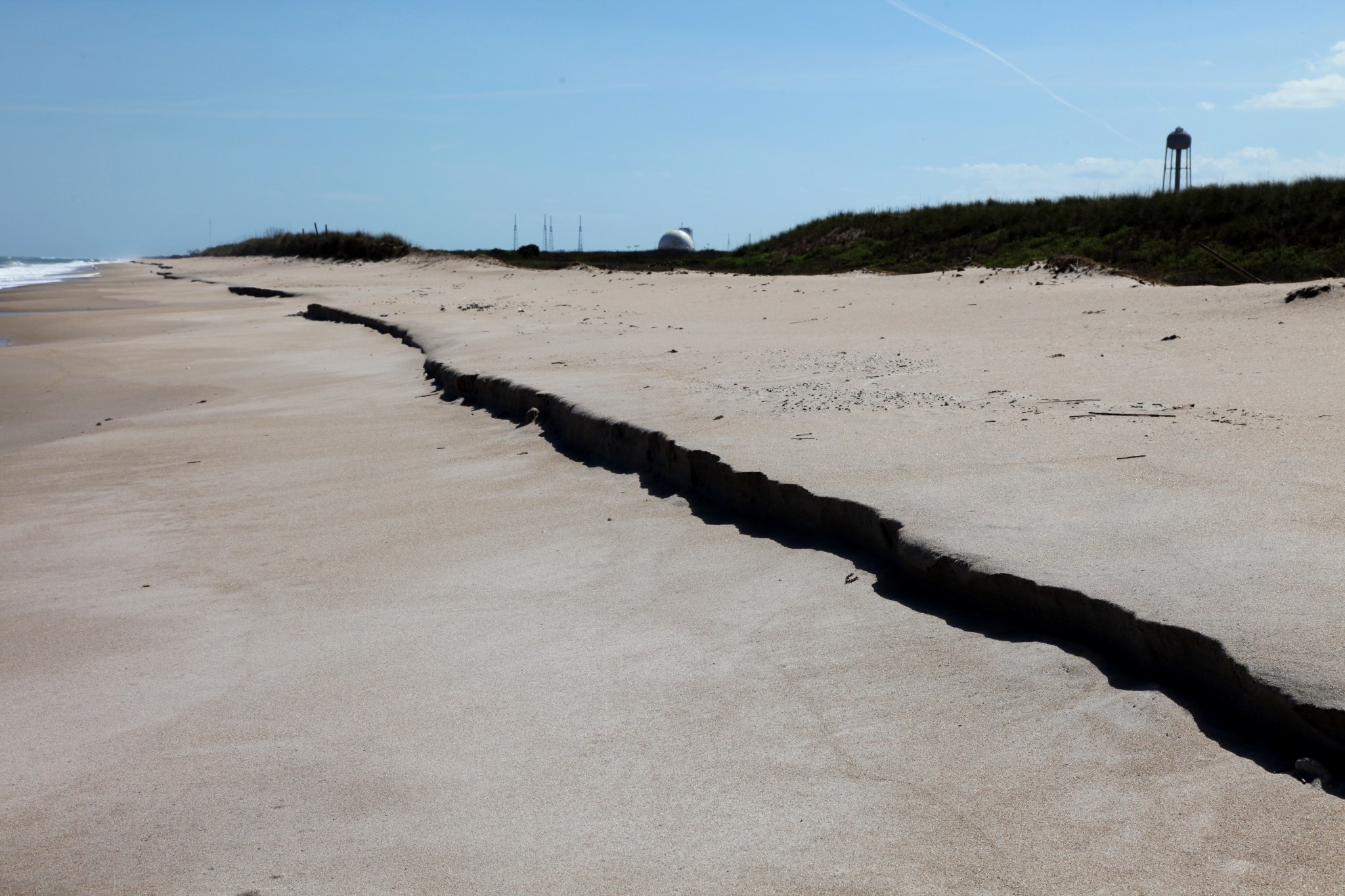
The new stretch of reconstructed sand dunes is near two key spaceport facilities — Launch Pads 39A and 39B. NASA officials recently announced a 20-year property agreement with SpaceX for operation of Pad 39A for the Falcon Heavy rocket. At nearby Pad 39B, work is underway to support the agency’s heavy-lift Space Launch System rocket and Orion spacecraft.
Looking further into the future, the agency is taking an approach it calls “managed retreat.” That means if sea-level rise becomes insurmountable, Bray said, NASA eventually may have to move roads, utilities and perhaps even launch pads ~ a costly and complex possibility.
In addition to rebuilding the dunes, the team’s efforts included planting native vegetation on newly created dunes to provide soil stabilization and to benefit native wildlife.
“We planted grasses, sunflowers, vines, sea grapes and palmettos,” Dankert said.
The space center’s shoreline also is an important habitat for wildlife, including several endangered species such as the Southeastern beach mouse, indigo snakes and gopher tortoises.
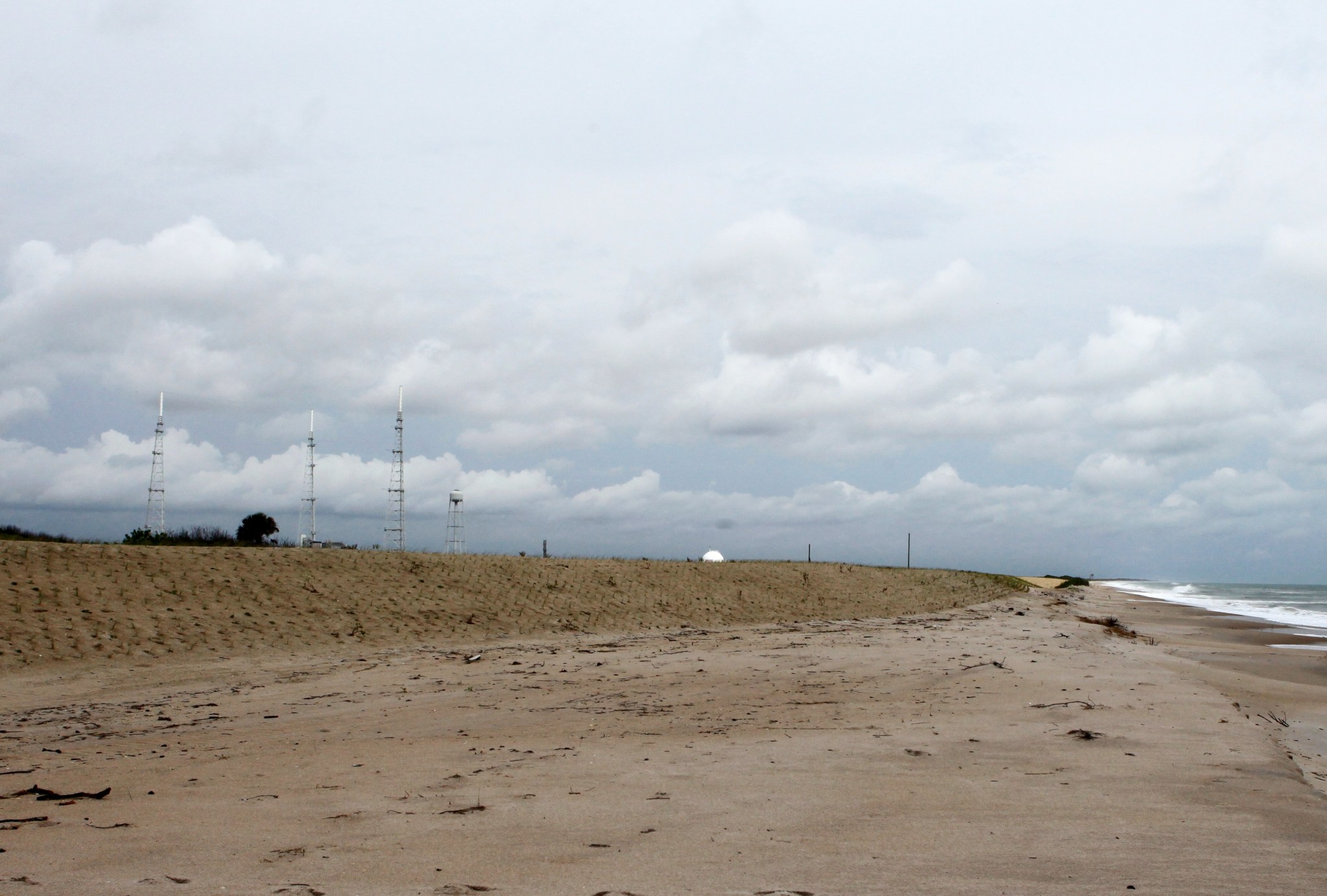
“We’ve done some great things working with our friends over at the (Merritt Island National Wildlife) Refuge to enhance the beach habitat, especially for our nestling and hatchling sea turtles,” he said. “This reconstructed stretch of dune will help shield this section of the beach from light intrusion associated with the pads and the Launch Complex 39 area.”
Kennedy’s shoreline is an important nesting ground for sea turtles. Newly hatched turtles can be disoriented by artificial light. During their summer nesting season, turtles emerge from the ocean along the pristine beach within 200 yards of the two launch pads.
By blocking launch pad lighting, Dankert noted that the rebuilt dunes will aid nesting and sea turtle hatchlings as they emerge from their nests and head toward the moonlit horizon of the ocean.
Dankert expressed pride in how well the sand dune project had progressed.
“Our beaches had been slowly eroding for years,” he said. “We got it all done pretty quickly, starting in October and we finished a little ahead of schedule.”

























